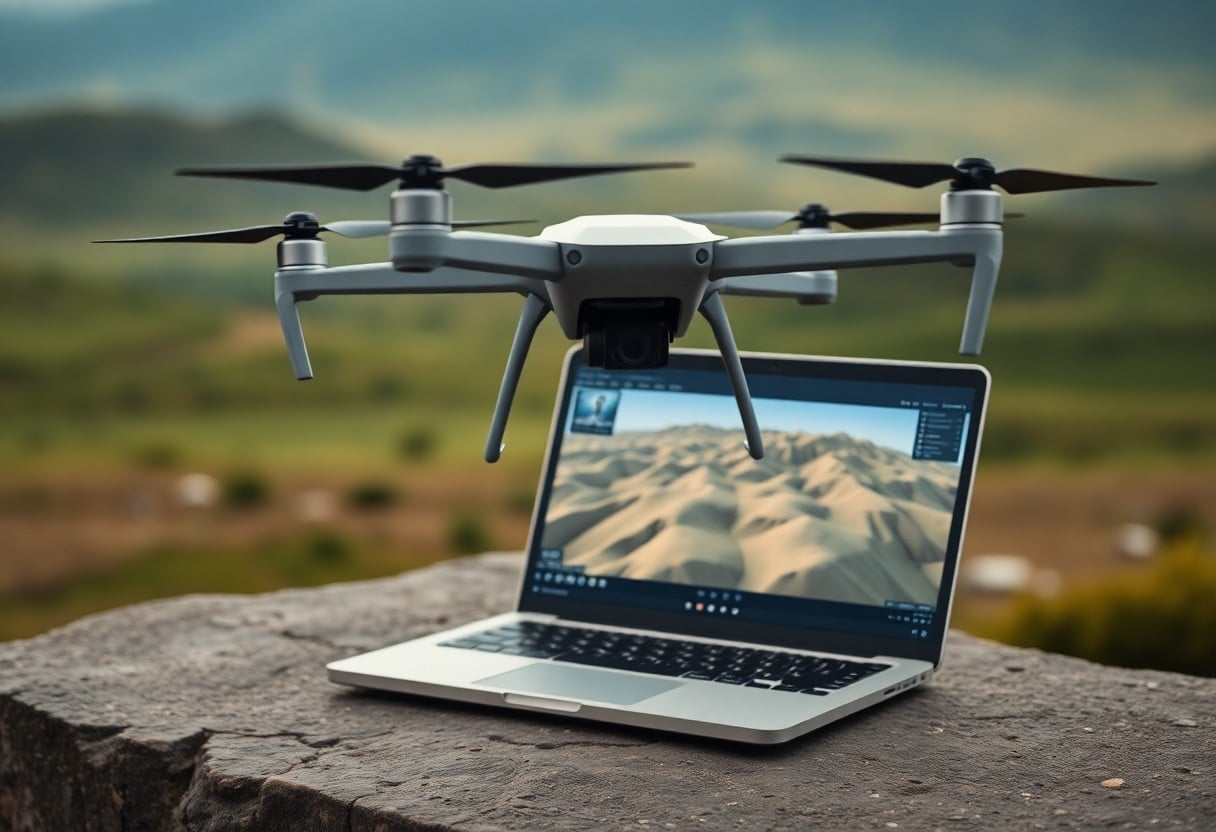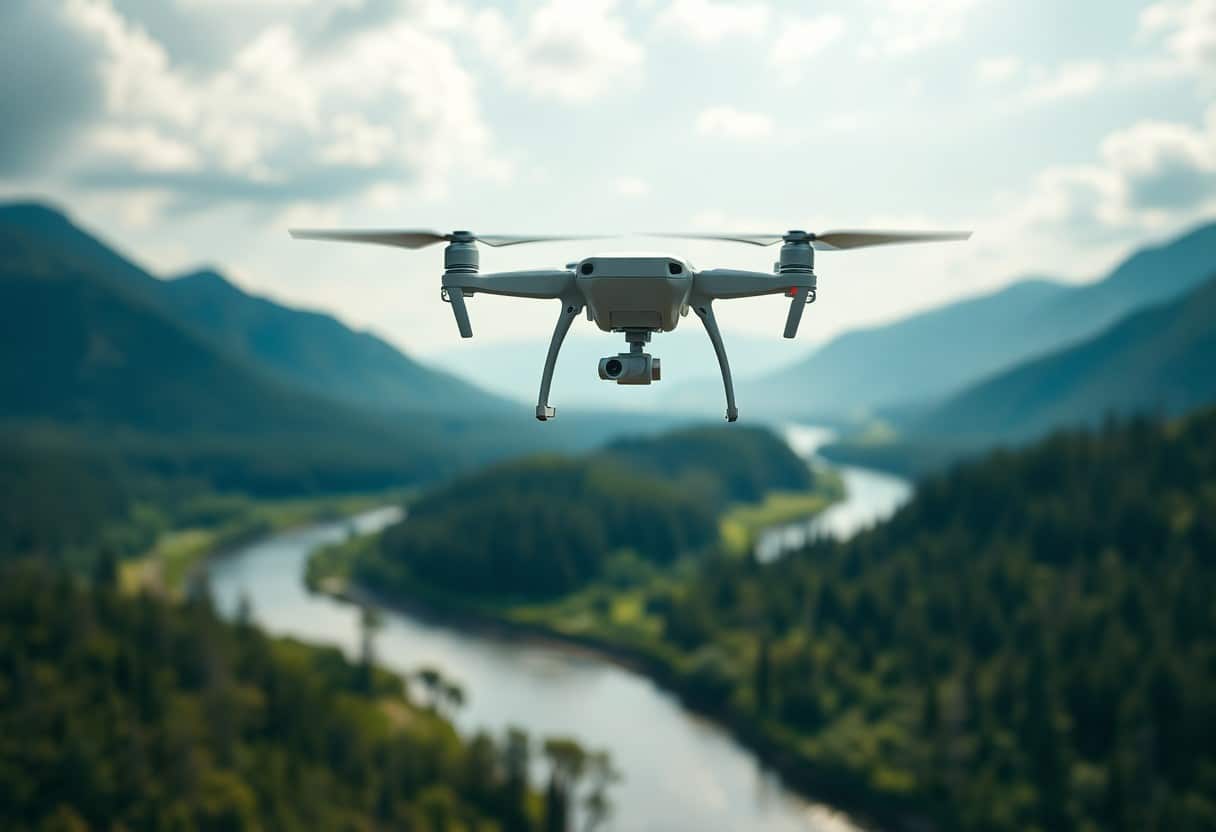Basic Steps to Getting Airborne Approval for Your Drone
Before you take a drone flight, you need to knowAirline flight authorizationThe Importance of. Make sure you follow the right steps to comply with theLaws and RegulationsAnd stay safe. Whether you are a hobbyist or a professional operator, it is important to familiarize yourself with the application process, required paperwork and flight restrictions. This article will provide you with a series ofNecessary StepsWe'll help you successfully obtain your flight authorization and ensure that your drone experience is safe and legal.
Key Points:
- Understanding regulations:Familiarize yourself with local flight regulations and laws governing the use of drones.
- Register your drone:Make sure your drone is registered as required by law.
- Apply for a flight permit:Apply for a flight authorization in a timely manner according to your flight requirements.
- Planning of flight paths:Plan and mark your flight path in advance, taking into account any no-fly zones.
- Check weather conditions:Check relevant weather and environmental conditions before flight.
- Perform safety inspections:Conduct a thorough safety check of the drone before flight.
- Maintain continuous learning:Keep up-to-date with drone operations and legal knowledge to ensure flight safety.
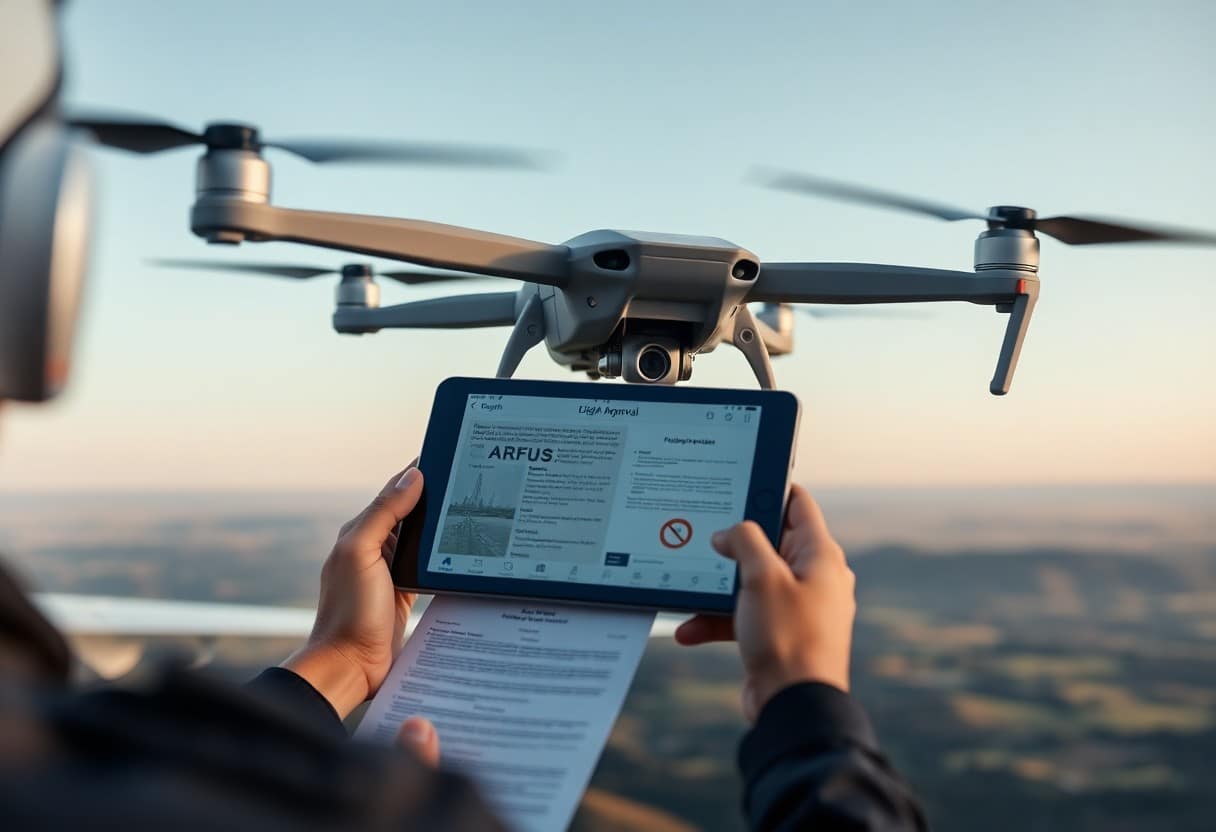
Understanding regulatory frameworks
Before obtaining air travel authorization, you need to understand the regulatory framework. These regulations not only ensure the safety of flight, but also help to protect the rights and privacy of others. It is important to follow all legal requirements in your drone operations program to effectively avoid potential legal issues.
Federal Aviation Administration (FAA) Guidelines
The Federal Aviation Administration (FAA) provides basic guidelines for drone operations, includingRegistration Requirementsrespond in singingFlight Regulations. You must follow these guidelines to remain legal and to ensure your safety and the safety of others. Understanding these requirements is critical to obtaining flight authorization.
Local and State Specifications
In addition to federal regulations, state and local governments may have their own specific drone regulations. You will need to check your local laws as theseRegulation may involve flight restrictionsThe following are some of the requirements of the Air Force
Local and state regulations are extremely important to drone operations. These regulations may vary from area to area, for example, some cities restrict drone use in parks and at community events. In some cases, you may even need to apply for aSpecial LicenseYou can only fly in certain areas. Therefore, knowing the local laws and regulations will help you to avoidFines or other legal liabilitiesand ensure that your actions do not violate the rights and safety of others.
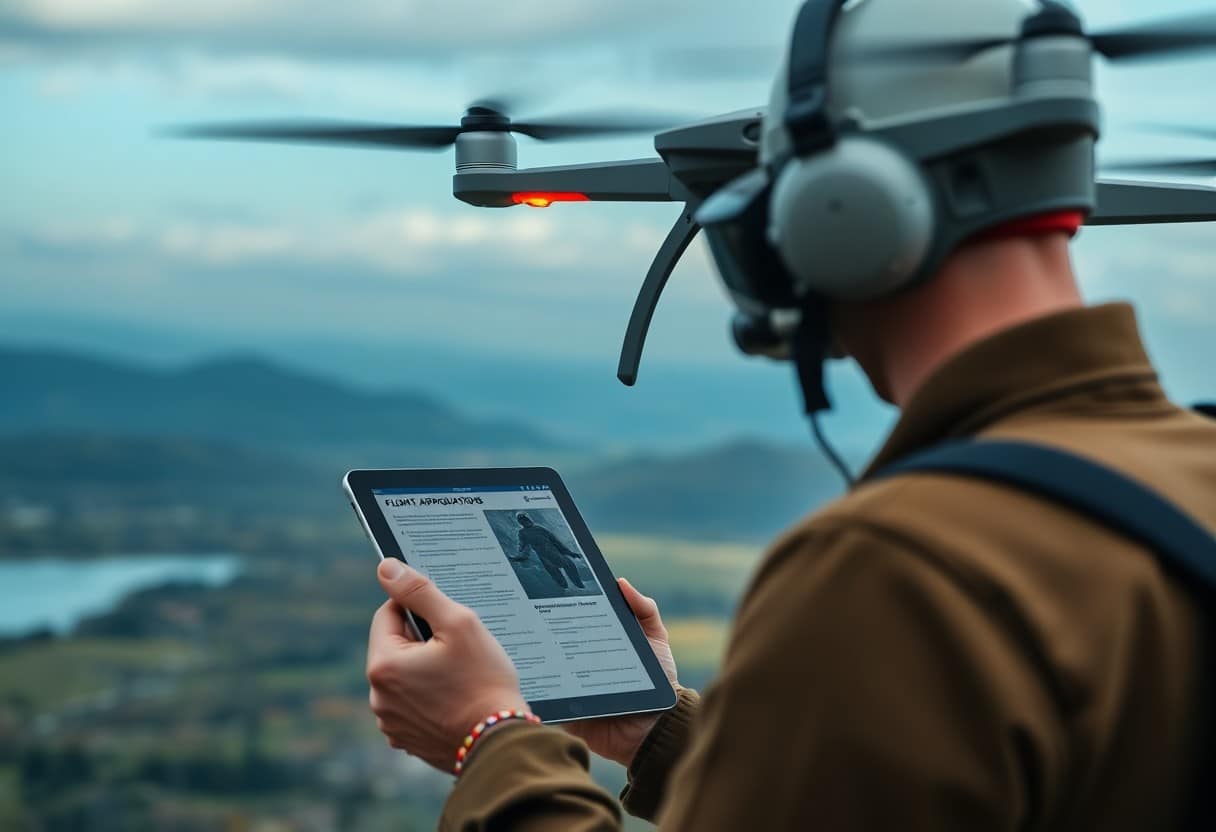
Pre-flight Planning
Before applying for a drone flight permit, it's important to do adequate pre-flight planning. Ensuring that you know exactly where you're flying and what you're doing will help you get a smooth approval. Discover more aboutDrone Photography Tips - 9 Steps to Capturing Stunning Aerial PhotographyThe information will help you prepare.
Purpose of Flight and Area Assessment
When planning your flight, you should carefully evaluate the purpose of your flight and the area in which it will take place. Knowing if there are specific geographic restrictions or airspace requirements will help you minimize potential legal issues and increase flight safety.
Risk Management and Security Agreements
Having a comprehensive risk management program and safety protocols in place is essential to protect yourself and others. Before flying, it is important to assess possible hazards and ensure that your drone is equipped with the necessary safety devices to cope with unexpected situations.
Risk ManagementIt's not just about identifying possible hazards, it's also about developing a detailed response plan. You should take into account factors such as weather, equipment failure and personnel safety. Get a clearSecurity AgreementsWill help you to take appropriate action in an emergency situation to protect the safety of all involved. Ensure your drone is equipped with the necessary technology, such as auto-return and obstacle avoidance systems, to minimize risk and increase flight success.
Application for Flight Approval
There are some key steps you need to follow when applying for an air flight approval. Firstly, you should ensure that you are in compliance with all relevant regulations and requirements. You can refer to10 Basic Steps to Safe Drone Operation - Beginner's GuidePlease contact us for more information and guidance. Taking these steps will make your application process much smoother.
Required files
There are a number of things you will need to have on hand when you submit your applicationfileThe following documents are required to prove that you meet the flight requirements. These documents may include proof of registration of the drone, a flight plan, and any necessary insurance policies. It is important to ensure that all documents are up to date to avoid possible delays.
Submission Process
In order to submit your application, you will need to follow the requiredworkflowsCarrying out the operation. This usually involves submitting the application form online and uploading the required documents. Requirements may vary from region to region, so please check the relevant guidelines carefully to ensure that you are correct.
existSubmission ProcessIn the application, you will need to log in to the designated platform and there is usually a form for filling out the application. Upload all of your documents as required and make sure you fill out the contact information correctly. Once submitted, keep an eye on the status of your application so that potential questions or requests for additional documents can be addressed in a timely manner. Successful approval will allow your drone flight program to proceed smoothly.
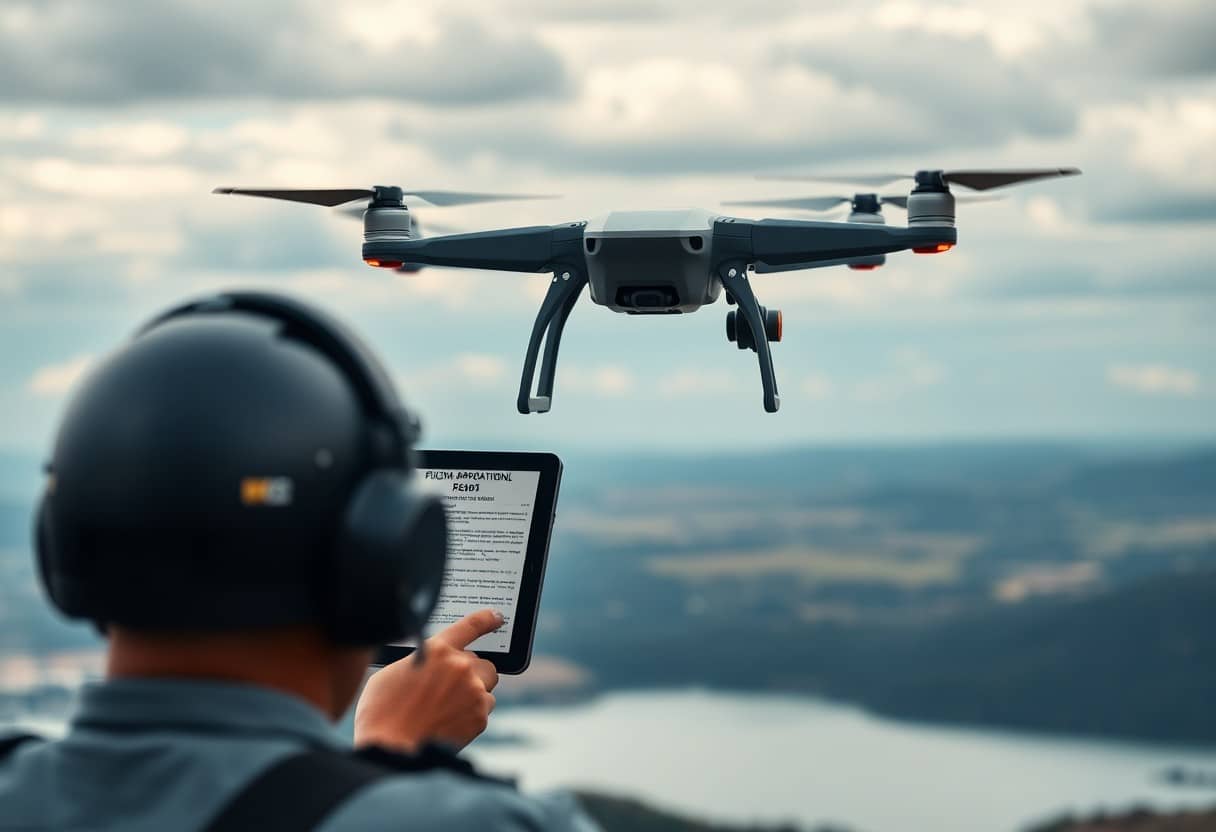
Navigation Approval Process
In order to successfully obtain your drone flight approval, you need to understand the entire8 Steps to Accurate Drone Mapping and Aerial 3D ReconstructionThe process. This includes submitting the necessary documents, completing the application form and following all local laws and regulations. Being well prepared and understanding the process will help you get licensed more smoothly.
Communication with the Administration
Maintaining good communication with the authorities is crucial to your approval process. You need to make sure that you understand their requirements accurately and submit the required documents as instructed. Being proactive in asking questions and maintaining communication can help you resolve issues in a timely manner, thus speeding up the approval process.
Expected Delays and Common Challenges
During the application process, you may encounterdelayrespond in singingChallengeWhether it's an additional request from the authorities or a mistake in processing a document, you need to plan ahead to avoid surprises. Whether it's additional requirements from the authorities or mistakes in processing documents, you need to plan ahead to avoid surprises. Staying flexible and making timely adjustments to your plan can improve your chances of approval.
In the process of obtaining authorization to fly a droneExpected Delayrespond in singingCommon ChallengesIt is unavoidable. For example, a review may be delayed due to excessive workload, or additional explanatory documents may be required. In addition, you may be faced with unclear guidance and specifications, so being patient and aware of these possible issues in advance can help you meet the challenge more effectively, resulting in a quick and smooth approval.
Compliance and Reporting
To ensure that your drone flights are in compliance, you must understand the importance of compliance and reporting. This includes complying with all relevant regulations and making the necessary reports after each flight. Make sure you regularly check for updated laws and policies to avoid legal liabilities that could have serious consequences for you.
Post-flight report request
After each drone flight, you are required to submit post-flight reports. These reports typically include basic information about the flight, such as time, location, mission and any unusual circumstances. Complying with these requirements not only helps to ensure safety, but also helps to avoid possible legal issues in the future.
Maintaining Compliance and Regulation
To consistently comply with the legal regulations governing drone flight, you must regularly review and update your knowledge. This includes attending relevant educational courses, seminars, and keeping abreast of new regulations and procedures. Continued compliance not only protects you, but also ensures that those around you are protected from potential hazards.
Maintaining compliance and regulations is an important step in ensuring the safety of your drone flights. You must take the initiative to understand and comply with all legal requirements.This includes the altitude, no-fly zones, and necessary flight authorizations. This not only prevents fines, but also protects you from liability in the event of an accident. Consequences of non-compliance may include heavy fines and criminal liability, and may even affect your flight authorization.. It is therefore the responsibility of every drone operator to remain sensitive to current regulations and to regularly update your knowledge. Ensure that everything is run within the legal framework for safe and worry-free flights.
Best Practices for Drone Operations
You should follow best practices when operating your drone to ensure safety and efficiency. Check your equipment and followLocal LawsTo ensure that the drone'sGood ConditionIn addition, it is important to plan routes rationally to avoid flying in densely populated areas. In addition, plan your routes wisely, avoid flying in populated areas, and make sure you have proper sight distance. YourFlying ProgramWeather conditions should be taken into account, which can help you avoid accidents.
Tips for Safe and Efficient Flying
Here are some steps you can take to ensure safety and efficiency before conducting a drone flight:
- CheckBatteries for DronesStatus
- ConfirmationSoftware and FirmwareFor the latest version
- work out in advanceFlying Program
- Ensure that you fly in good weather conditions
Ensure smooth and safe drone operations to minimize the risk of accidents and improve the overall flight experience.
Keep up to date with regulatory changes
You need to stay on top of drone-relatedStatutory ChangesThe changes may affect your business, and you may not be able to avoid unnecessary legal risks. These changes may affect yourFlight PermitIt's important to stay informed as the regulations are updated. As regulations are updated, take the course to update your knowledge to ensure that your operations are stilllegallyrespond in singingSecurity.
With the rapid advancement of drone technologyRegulatorsAdjustments are often made to accommodate emerging challenges. This may include newFlight RestrictionsWe may also have laws, licensing requirements or security measures in place. Therefore, you should periodically review the laws and regulations in your area or consider subscribing to relevant newsletters to stay informed. OngoingLearningrespond in singingadaptationwill help you become a competent operator and ensure your safe and legal operation in this ever-changing environment.
Basic Steps for Obtaining Airborne Approval for a Drone
There are a few basic steps you need to follow in order to successfully obtain air flight authorization for your drone. First, make sure you are familiar with local laws, regulations and flight requirements, second, prepare and submit the required application documents, and finally, follow the required pre-flight inspection and safety measures. By understanding these steps, you will be able to successfully obtain approval and safely operate your drone.
Frequently Asked Questions
Q: What is the Drone Airborne Approval?
A: Airborne drone approval is the process of obtaining permission from the relevant authorities to legally operate a drone for flight in a specific area and under specific conditions. This usually includes compliance with local laws and regulations, airspace restrictions, and safety standards.
Q: Why do I need to get an air flight authorization?
A: Obtaining an airborne flight authorization ensures that the drone is operated legally and reduces potential hazards to other aircraft and ground personnel. It also helps to maintain public safety and protect privacy.
Q: What are the basic steps for obtaining flight authorization?
A: The basic steps for obtaining flight approval usually include: 1) confirming that your drone complies with local regulations; 2) preparing a flight plan; 3) submitting the appropriate application; 4) waiting for approval from the relevant authorities; and 5) upon receipt of the approval, following all safety instructions for the flight.
Q: What documents need to be submitted for approval?
A: The documents to be submitted usually include the drone's certificate of registration, flight plan, operator's manual, proof of insurance and any other relevant safety assessment reports. Specific requirements may vary depending on the local aviation authority.
Q: What happens if I don't get my flight authorization?
A: If you fly without authorization, you may face legal consequences such as fines, administrative penalties or criminal charges. In addition, unauthorized operation may also result in accidents and personal injury, increasing potential legal liability.
Q: Do I need to reapply periodically after I am approved?
A: Yes, depending on local regulations, flight authorizations may have an expiration date. In some cases, you may need to reapply periodically or get re-approved after a major modification to the drone.
Q: What resources are available to help me learn more about getting my flight authorization?
A: You can visit your local aviation authority's website to review regulations and guidance documents. In addition, some drone associations and professional organizations offer educational resources and training to help drone operators understand the flight approval process.
